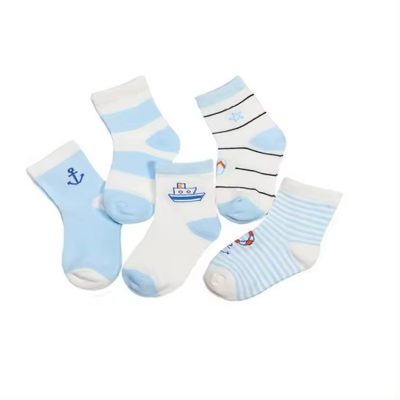In today’s environmentally conscious world, sustainability is more important than ever. Even in the realm of fashion, including kids stockings, consumers are increasingly seeking out eco-friendly options. In this blog post, we’ll explore the importance of sustainable practices in kids stockings manufacturing and highlight some of the ways that brands are making strides towards a greener future.
Introduction: The fashion industry has a significant environmental footprint, with the production of textiles and garments contributing to pollution, waste, and resource depletion. As consumers become more aware of these issues, there is growing demand for sustainable and eco-friendly alternatives, including in the manufacturing of kids stockings.
Materials Matter: One of the most significant factors in the sustainability of kids stockings is the choice of materials. Brands are increasingly opting for eco-friendly materials like organic cotton, bamboo, and recycled fibers in their stocking production. These materials are grown and harvested using sustainable practices that minimize environmental impact and reduce the need for harmful chemicals and pesticides.
Ethical Manufacturing Practices: In addition to using eco-friendly materials, brands are also focusing on ethical manufacturing practices to ensure that their stockings are produced in a responsible and sustainable manner. This includes fair labor practices, safe working conditions, and minimizing waste and pollution throughout the production process. By prioritizing ethical manufacturing, brands can support the well-being of workers and communities while minimizing their environmental footprint.
Reducing Waste: Another key aspect of sustainability in kids stockings manufacturing is reducing waste at every stage of the production process. Brands are implementing strategies to minimize fabric waste during cutting and sewing, as well as exploring innovative recycling and upcycling techniques to repurpose materials and reduce the amount of textile waste that ends up in landfills. By embracing a circular economy model, brands can extend the lifespan of their stockings and minimize their environmental impact.
Transparent Supply Chains: Consumers are increasingly demanding transparency and accountability from brands when it comes to sustainability. Brands that are committed to eco-friendly practices are often transparent about their supply chains, sharing information about where their materials are sourced, how their stockings are manufactured, and the steps they are taking to reduce their environmental footprint. By fostering trust and transparency, brands can build stronger relationships with environmentally conscious consumers and drive positive change within the industry.
Conclusion: Sustainability is no longer just a buzzword; it’s a fundamental principle that is shaping the future of fashion, including kids stockings. By prioritizing eco-friendly materials, ethical manufacturing practices, waste reduction, and transparency, brands can create stockings that are not only stylish and comfortable but also environmentally sustainable, ensuring a greener future for generations to come.








